Artist Ian Cheng explores the technological and aesthetic potential of AI
In Berlin’s cavernous Halle am Berghain, New York-based artist Ian Cheng plunges viewers into an immersive world of AI and existential anime in ‘Life After BOB’
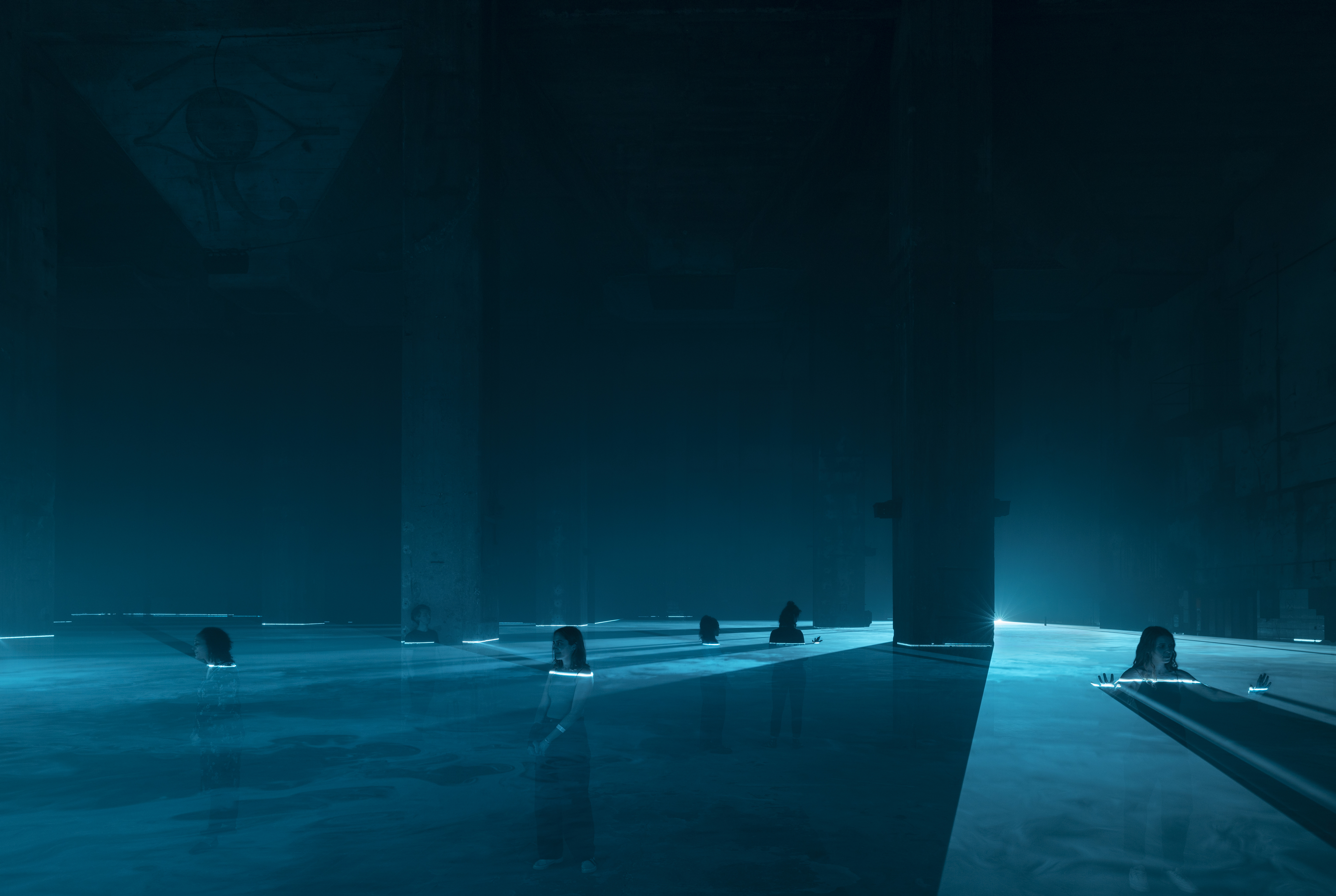
We’ve seen the viral videos of people using virtual reality headsets at home, so involved in personal digital realms that they forget the physical limitations of their living rooms. They jump away from a monster only to leap into an IRL wall, or swing an imaginary baseball bat and end up smacking a relative.
It can be awkward to squeeze emergent technologies into physical spaces, let alone more traditional modes of exhibition, commerce, and communication. We are observing in real time the rather haphazard way in which artists (and occasionally con-artists) have been exploring and exploiting NFTs. Equally, artist-made VR can feel awkward in a gallery setting. Spending 15 minutes hooking up to electronic gear, to speculatively explore a virtual artwork, hardly encourages the accidental encounters that we expect in physical galleries.
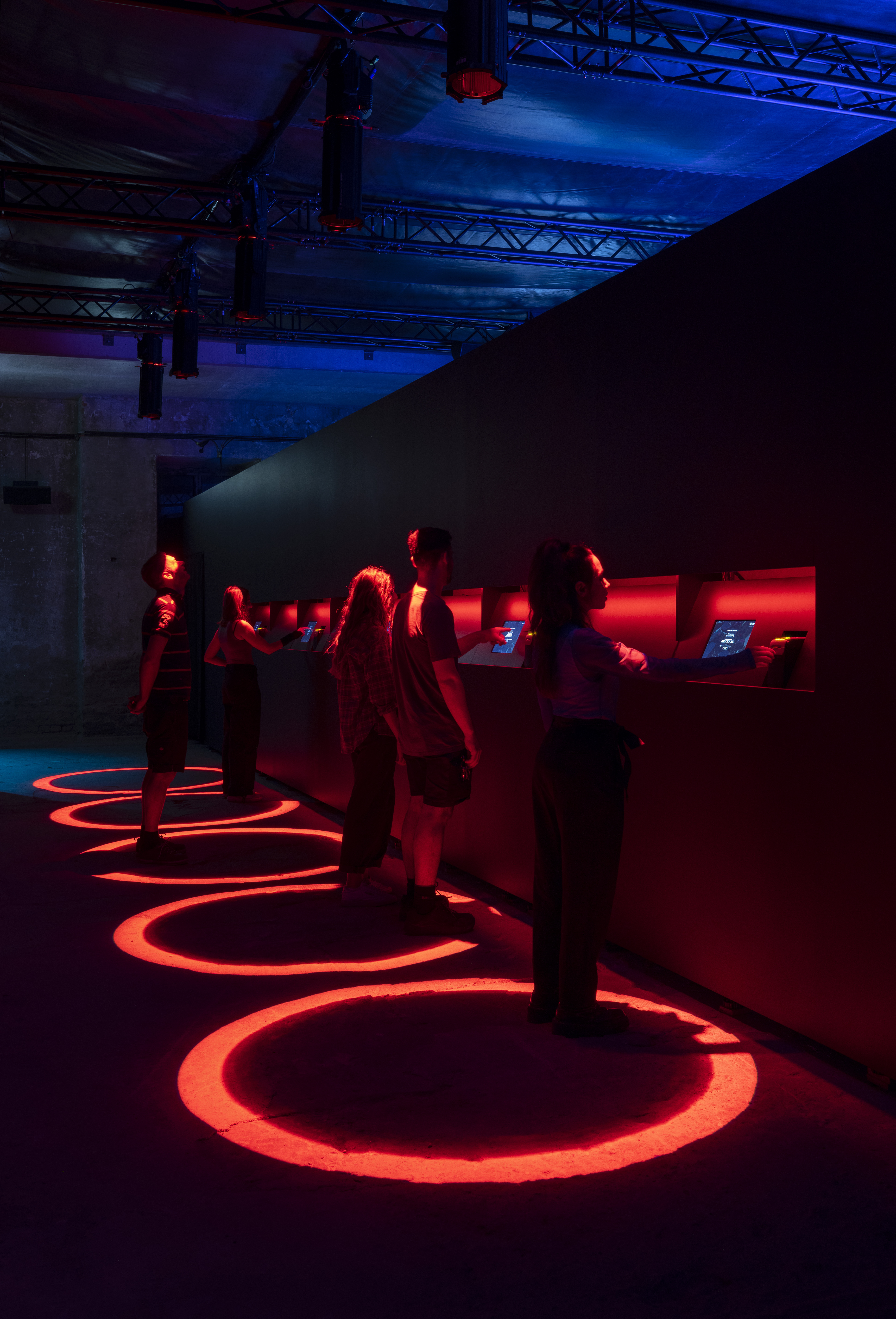
Ian Cheng: Life After BOB, 9 September - 6 November 2022 at Halle am Berghain, Berlin. © 2022 Ian Cheng. Presented by LAS (Light Art Space). © Andrea Rossetti.
These are questions New York-based artist Ian Cheng wrestles with – amongst others of a deeper philosophical bent – in his ongoing project ‘Life After BOB’. At its root is a 50-minute narrative anime, The Chalice Study, whose protagonist, Chalice, has had an experimental AI named BOB placed into her nervous system by her neural engineer father. Cheng envisions it as the first of an eight-episode series, which will not only explore a variety of characters, each with ethical and social reflection upon AI technology, but also explore aesthetic and technological capacities as each episode absorbs new modes of making, collaboration, networking, and play.
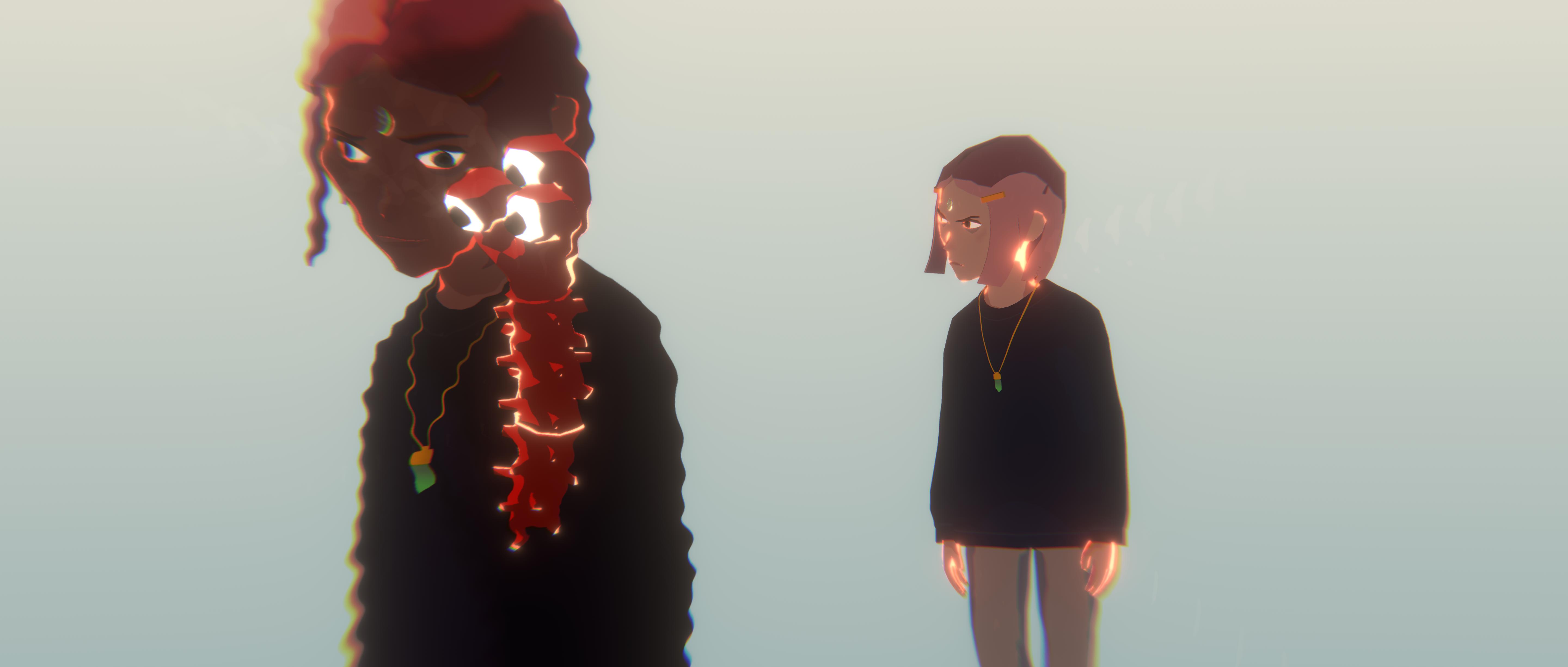
Ian Cheng, Life After BOB: The Chalice Study (still), 2021, Real-time live animation, colour, sound, 48 mins. Commissioned by LAS (Light Art Space), The Shed and Luma Arles. Courtesy of the artist.
The Chalice Study is presented largely as a traditionally projected artist film, though future episodes will experiment with new experiences and technologies. Cheng considers this first episode a scaffolding: ‘Can I tell a story? Can I make an animation look like anime and feel entertaining enough within the Unity game engine? Because that will be the foundation for later episodes, which will have more AI and algorithmically driven storytelling.’
The work is co-commissioned by the Luma Foundation, The Shed, and Light Art Space (LAS), and its global tour has so far included Seoul’s Leeum Museum of Art as well as Zurich and New York, homes of the first two collaborating organisations. It has now arrived in an industrial space adjoining Berlin’s legendary Berghain for LAS’ presentation. While the film was given a traditional cinematic presentation at previous locations, in its present iteration, LAS head of programmes Amira Gad has overseen a truly immersive and architectural experience.

Ian Cheng, Life After BOB: The Chalice Study (still), 2021, Real-time live animation, colour, sound, 48 mins. Commissioned by LAS (Light Art Space), The Shed and Luma Arles. Courtesy of the artist
With Gad’s encouragement, Cheng has drawn inspiration from Disneyworld, particularly its use of mundane fictional details to build a deeply immersive experience. His scaffolding is created in Unity, an engine employed for many well-known video games including Monument Valley, Fall Guys, and Pokémon Go, and increasingly used by artists and filmmakers intrigued by the overlapping of fine art with progressive technology and aesthetics. He has used Unity to create environments formed of countless carefully composed components and characters, a process he terms ‘Worlding’ – not only ‘fleshing out the territory’ of place, character, and backstory as a fiction writer would, but going further to create ‘an actual place that people can inhabit, then have the potentially tedious and difficult task of keeping that world alive’.
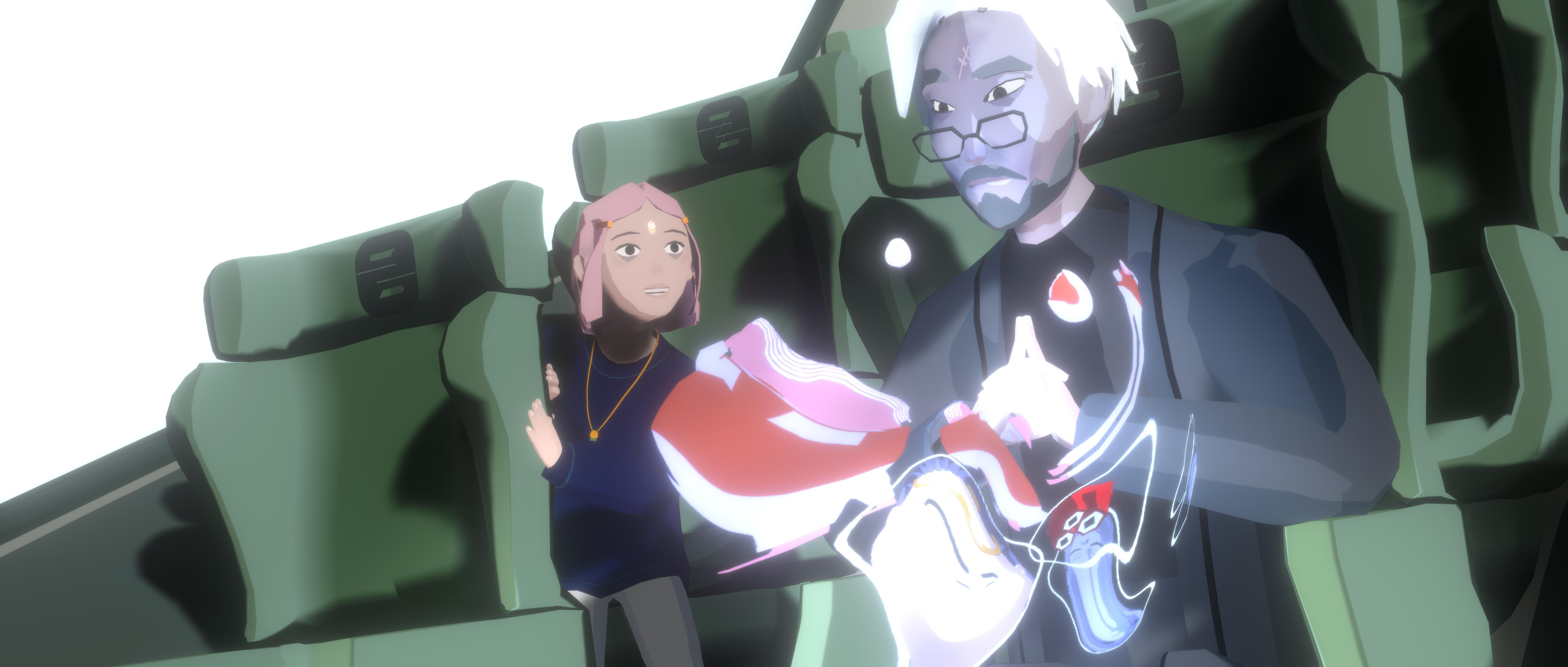
Ian Cheng, Life After BOB: The Chalice Study (still), 2021, Real-time live animation, colour, sound, 48 mins. Commissioned by LAS (Light Art Space), The Shed and Luma Arles
His ambition is to create a world so deep in character, backstory, and potential that not only can it contain narrative tales such as The Chalice Study, but the worlding can go on to support interactivity, audience collaboration, and new (perhaps as yet unknown) modes of storytelling.
Receive our daily digest of inspiration, escapism and design stories from around the world direct to your inbox.
The Chalice Study follows a scripted, fixed narrative, though background elements of the world react differently for each screening. Future instalments will become more AI-driven, potentially so each retelling of a story may emerge differently in narrative and aesthetic, producing genuinely one-off experiences.
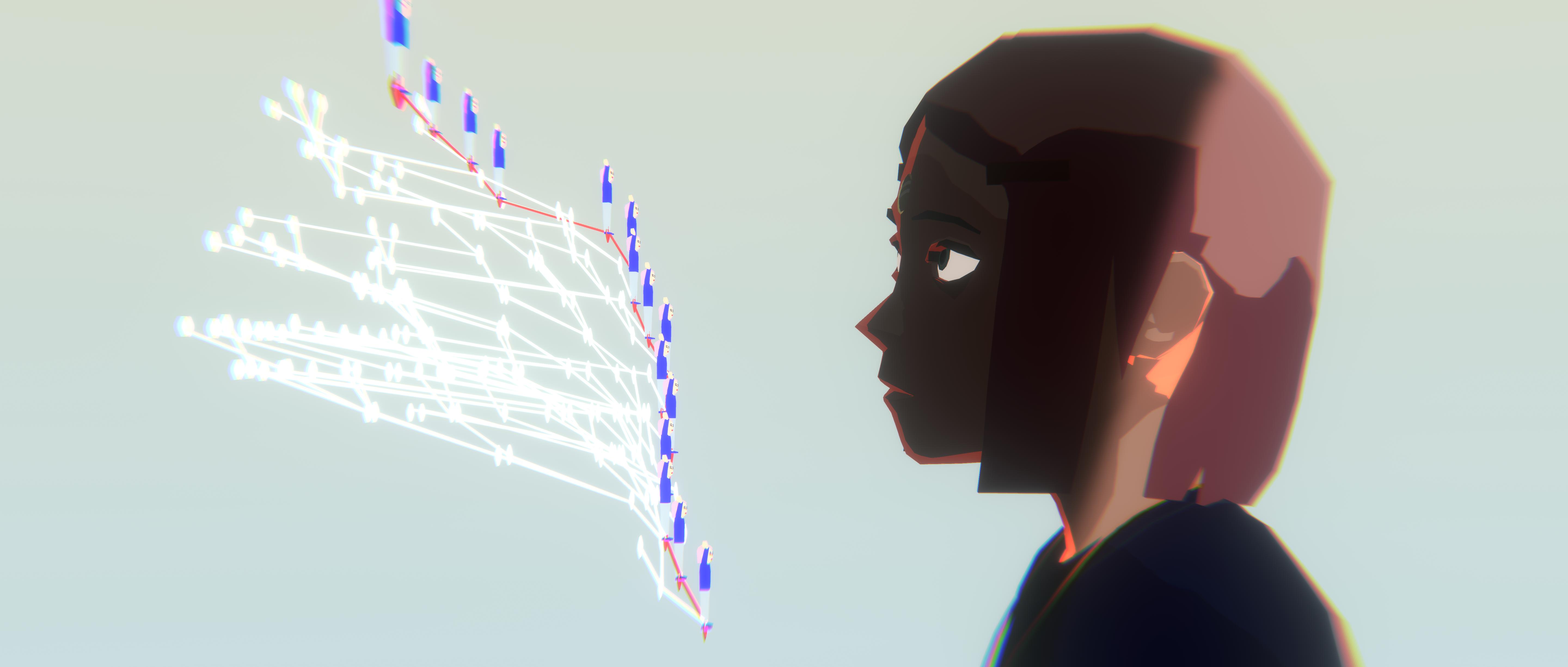
Ian Cheng, Life After BOB: The Chalice Study (still), 2021, Real-time live animation, colour, sound, 48 mins. Commissioned by LAS (Light Art Space), The Shed and Luma Arles. Courtesy of the artist.
‘The holy grail in storytelling is if I can start a story as an author, and then have a simulation and AI help complete it in a meaningful way,’ Cheng proposes. He had taken on this challenge with Emissaries (2015-17), a trilogy of simulations about cognitive evolution, in which his cast interacts within open-ended narratives. With a dual degree in cognitive science and art practice, Cheng seems to view his works more as ongoing experiments than completed art objects. He states that in Emissaries ‘the main character goes off script and it becomes chaos. It’s entertaining for me, but inherently meaningless – it doesn't coalesce in a satisfying and meaningful way.’
Visitors to LAS’ exhibition finish their visit with a free NFT, an imagined and personalised future character referencing the Life After BOB story. Away from LAS, Cheng has also collaborated with Outland to create 3Face, an NFT forged of aspects of an individual’s personality and their digital wallet transactions to create a unique psychological portrait. Cheng hopes that such NFT owners might appear as background entities in future Life After BOB films, so that anybody ‘can start to participate, influence the artwork, and actually see some of themselves in it’.
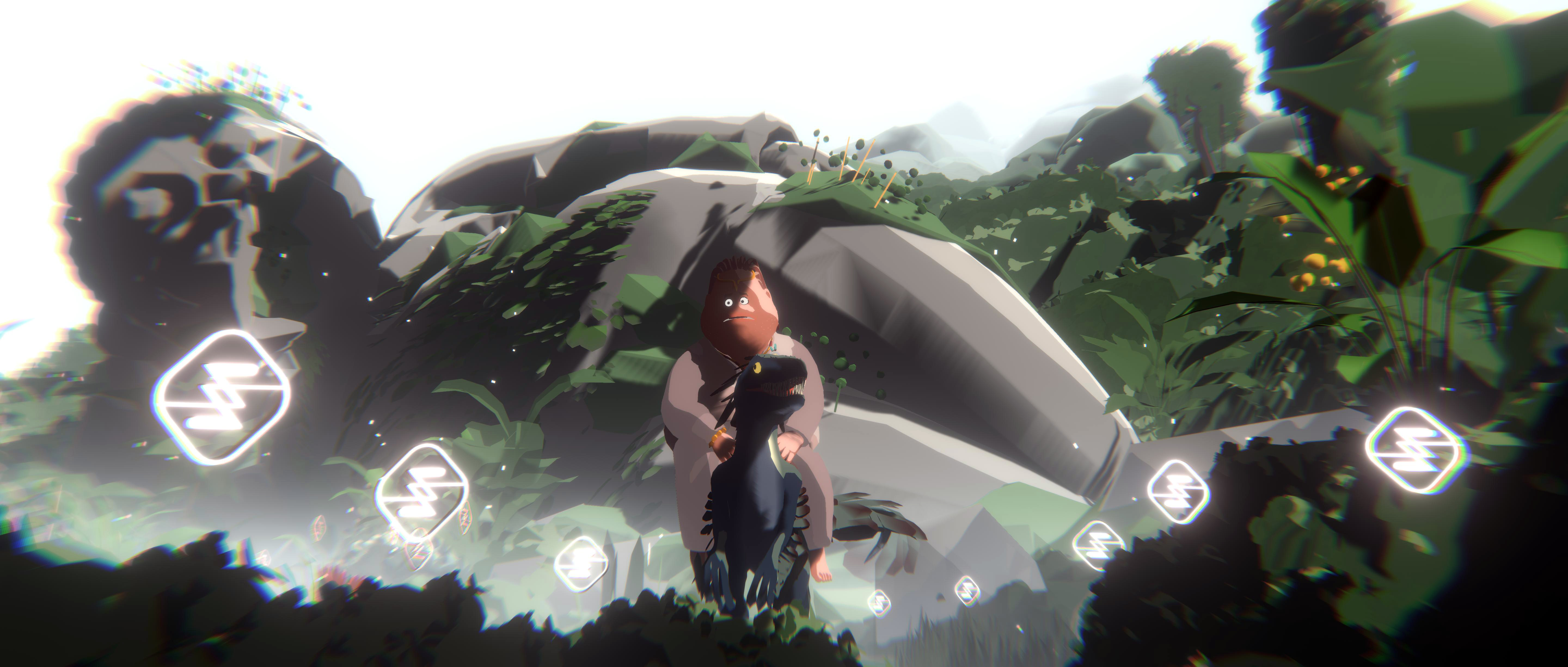
Ian Cheng, Life After BOB: The Chalice Study (still), 2021, Real-time live animation, colour, sound, 48 mins. Commissioned by LAS (Light Art Space), The Shed and Luma Arles. Courtesy of the artist.
The promise of NFTs as a component of audience engagement, rather than a mere vehicle for speculation, is enticing. However, for all the potential technological futures which Cheng’s scaffolding may support, this exhibition is a fundamentally physical and bodied experience, constructed around three phases. Cheng describes the first as a moment of ‘existential gathering’ as guests climb upstairs into darkness, slowly emerging through a horizontal laser field that fills the vast Berghain space like a glistening watery surface. The atmospheric otherness is supported by Lugh O’Neill’s spatial soundscape, designed to play with rhythms permeating the walls on days the Berghain nightclub is in full swing.
‘It’s a prelude to the film, an unconscious spa to massage your brain and mood into feeling the world,’ Cheng explains. Soon, the mellow vibe is interrupted by a sun-like light throbbing at increasing speed until it’s a visceral strobe. Both lighting experiences aesthetically foreshadow scenes from the film, though the artist is also interested in psychological framing: ‘I hope something happens to people's nervous systems, leading to “a sense of surrender to see the film”.’
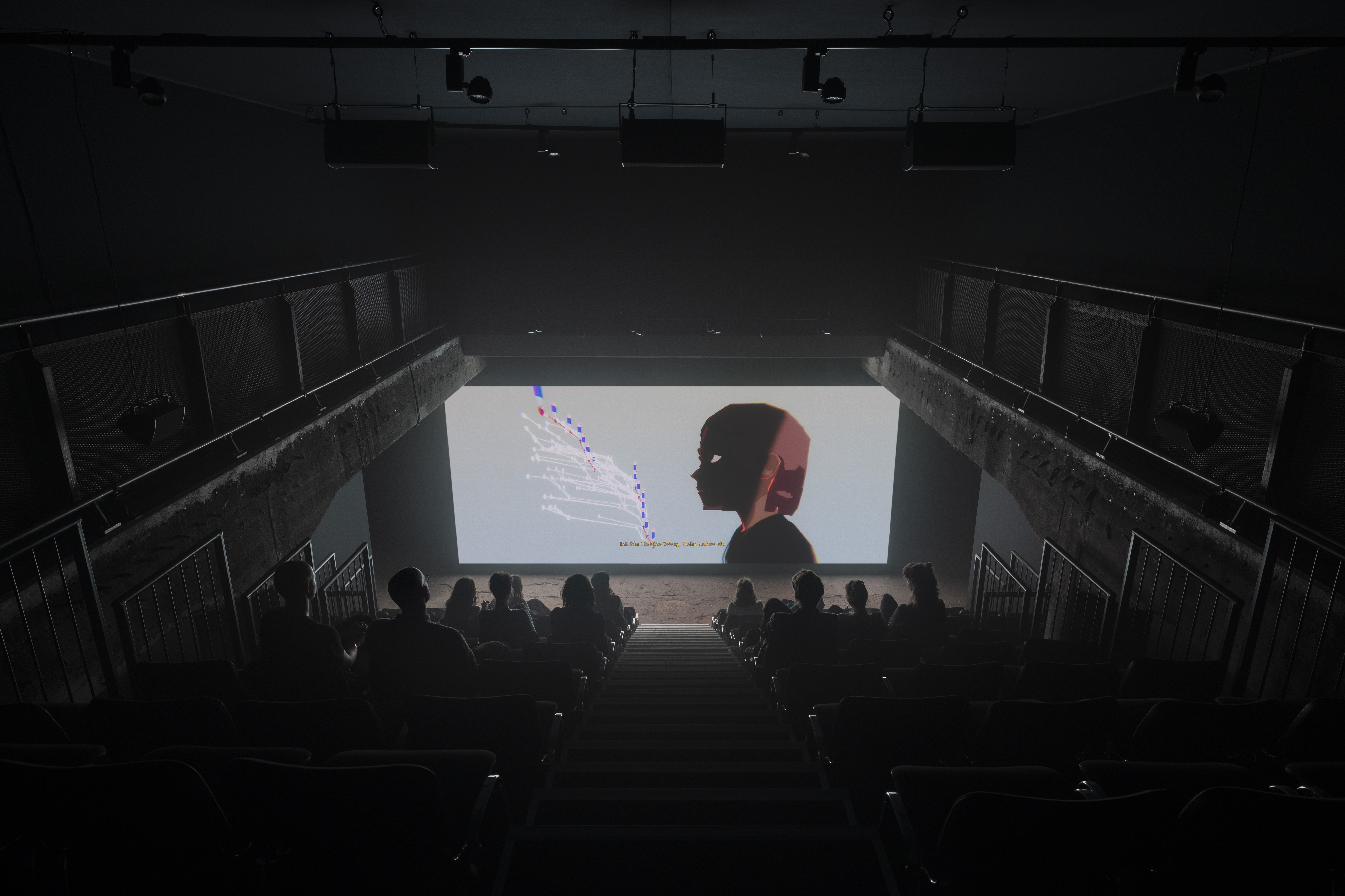
The exhibition’s purpose-built cinema. Ian Cheng: Life After BOB, 9 September - 6 November 2022 at Halle am Berghain, Berlin. © 2022 Ian Cheng. Presented by LAS (Light Art Space). © Andrea Rossetti
The actual film plays in a purpose-built cinema within the exhibition space, soundproofed by engineers Arup to shut out the world beyond. Chalice’s traumatic and existential journey is presented with bewildering creativity – perhaps too much for a first-time viewer, but in a way that builds anticipation for future episodes. We follow Chalice as she explores her identity with her infused AI BOB, and then as she reconsiders the meaning of self after it’s removed.
It is fitting that LAS – a young organisation formed to put on technologically infused art encounters in unexpected locations – is presenting Life After BOB in Halle am Berghain. The cavernous space not only has an otherworldly feeling, but is also conceptually aligned with Chalice’s journey. Berghain is a space of escape – in all the excessive, decadent, and kinky ways you can imagine – and clubbers are known for remaining within its thick industrial walls for days. Cheng was drawn to the location as soon as LAS suggested it: ‘In the film, Chalice is stuck in a dreamlike state for ten years, then she comes out, the sun hits her retinas, and she feels every photon like it's stinging her for the first time. I imagined coming out of Berghain, having not seen sunlight for 24 hours, feeling the pain of reality but also a stunned appreciation of “I'm back to the city streets and noise, the normality of life.” You can travel between a dreamworld and the real world fluidly. That's Berghain.’
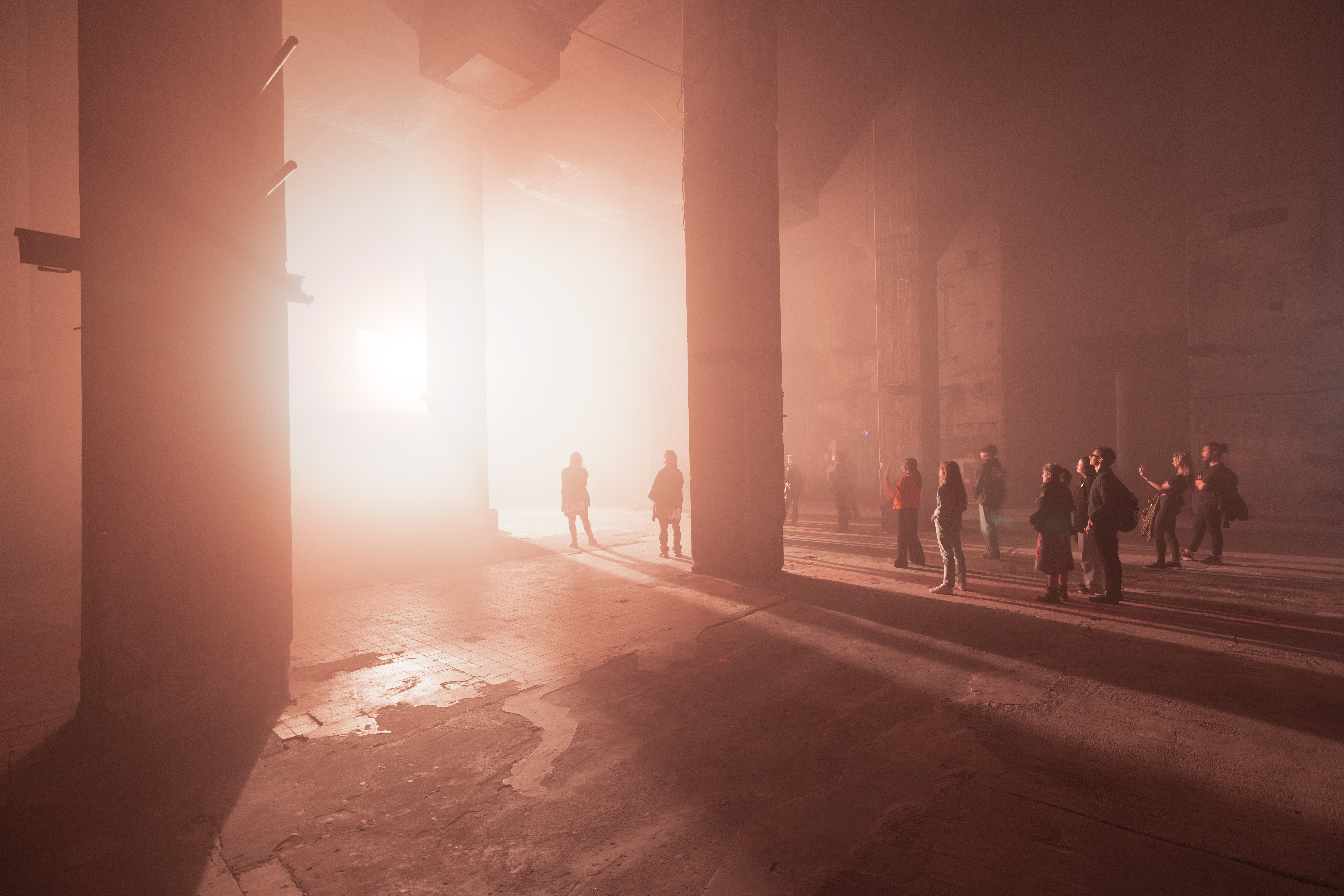
Ian Cheng: Life After BOB, 9 September - 6 November 2022 at Halle am Berghain, Berlin. © 2022 Ian Cheng. Presented by LAS (Light Art Space). © Andrea Rossetti.
After the screening, a final phase – Worldwatching – allows anybody to use their smartphone to rewatch an interactive version of the film. Any moment can be paused, cameras rotated, or focus pulled onto seemingly-arbitrary objects to uncover details, presented within a Wiki. ‘You can really break the film in this way,’ Cheng explains, and while this interactive mode is nascent, he hopes that by the final episode it might become the primary experience: ‘Suddenly you're in the world exploring details that couldn't be spoken about in the film itself.’ It’s an enticing possibility, in which audiences don’t just receive the narrative, but become real-time directors for unique and bespoke versions which unfold and evolve based on their input and involvement.
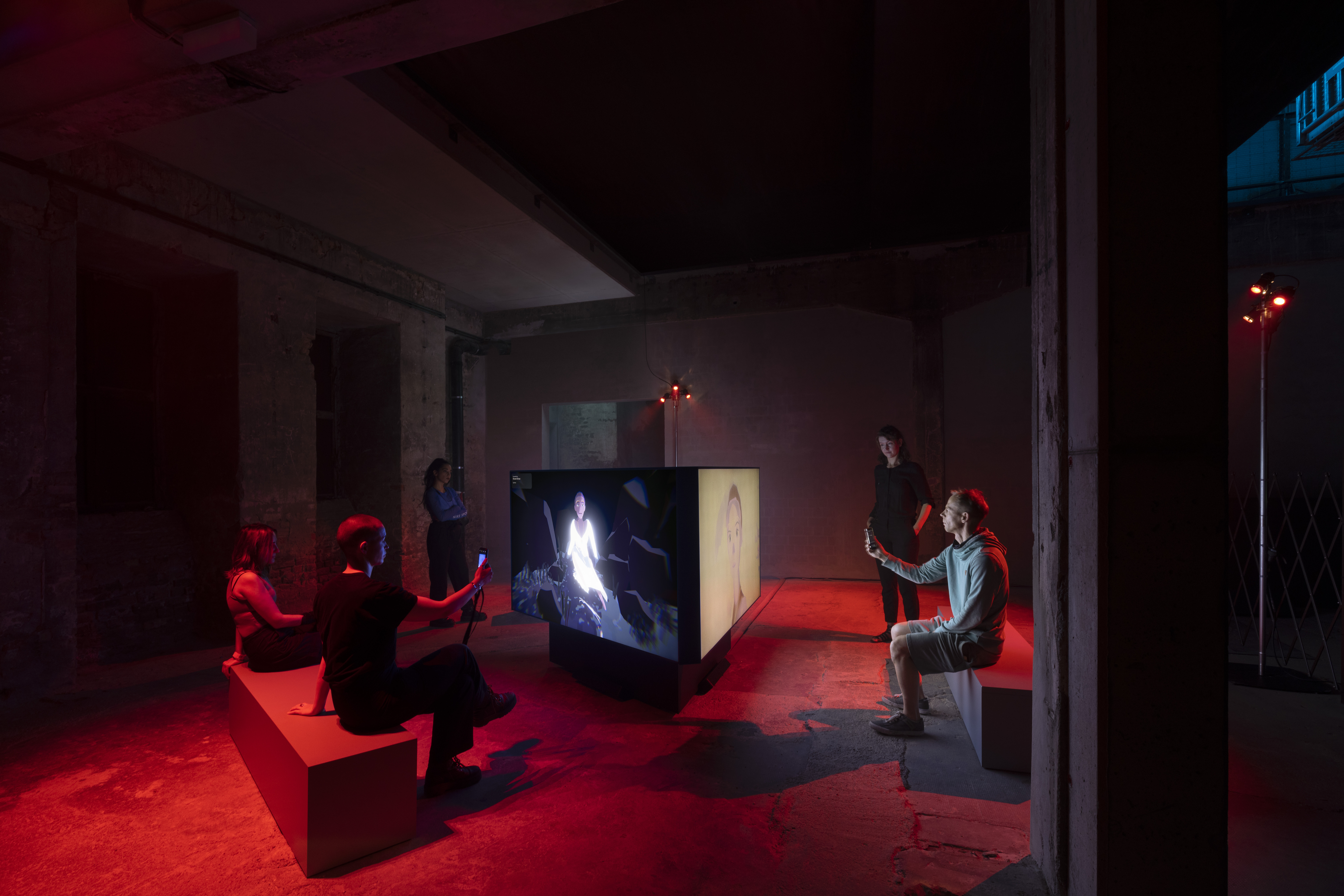
Ian Cheng: Life After BOB, 9 September - 6 November 2022 at Halle am Berghain, Berlin. © 2022 Ian Cheng. Presented by LAS (Light Art Space). © Andrea Rossetti.
‘LAS is about the future,’ declares the organisation’s director Bettina Kames. It's intriguing to think that the work exhibited here also isn’t so much the end result or a completed art project, but more the acknowledged first steps into a decade-long exploration with outcomes that can only be speculated on at present. Cheng has created his worlding scaffold ready to adapt and respond to new AI technologies so that Life After BOB might become not only an eight-episode anime series exploring the ethics of AI, but also a mapping of existence-altering technologies over their formative years.
He hopes that by the final episode he will have built a world so deeply immersive and rich in character that he can create an Avengers-like episode in which a cast of deeply developed characters return. Cheng thinks that by this stage ‘it's not even a film anymore, but almost like an existential fighting game where it plays itself’, the viewer offering ringside advice as though a boxing coach, guiding Chalice and other anime characters to interpret the narrative ‘in their own style and their own way of being. That’s the dream!’
INFORMATION
‘Life after BOB’, until 6 November, Halle am Berghain, Berlin, lightartspace.org; iancheng.com
Will Jennings is a writer, educator and artist based in London and is a regular contributor to Wallpaper*. Will is interested in how arts and architectures intersect and is editor of online arts and architecture writing platform recessed.space and director of the charity Hypha Studios, as well as a member of the Association of International Art Critics.
-
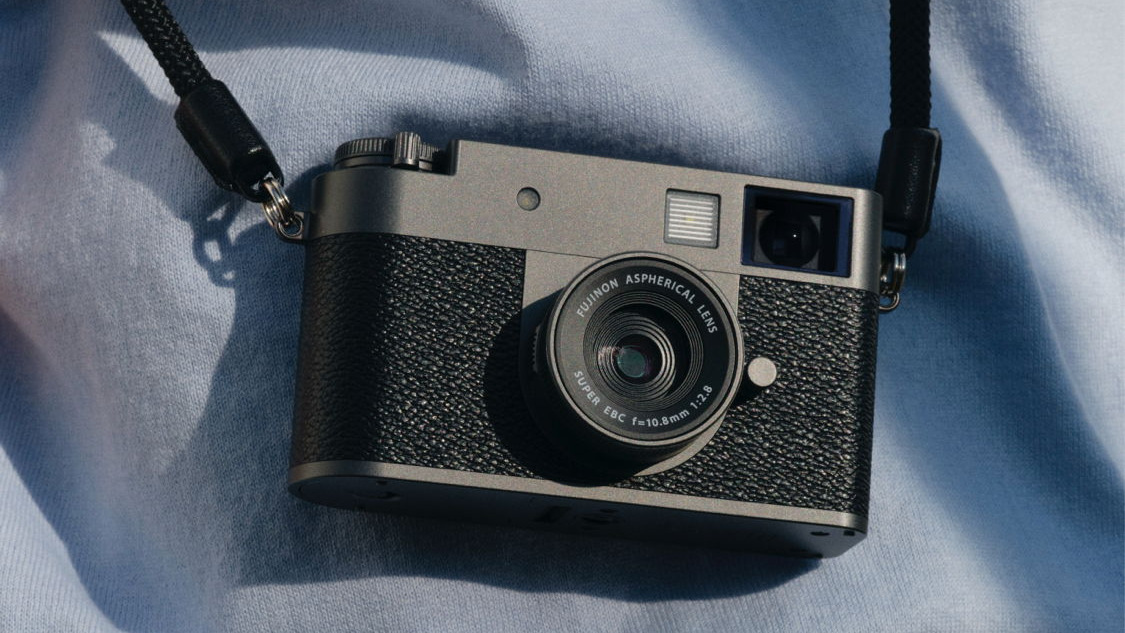 Five of the finest compact cameras available today
Five of the finest compact cameras available todayPocketable cameras are having a moment. We’ve assembled a set of cutting-edge compacts that’ll free you from the ubiquity of smartphone photography and help focus your image making
-
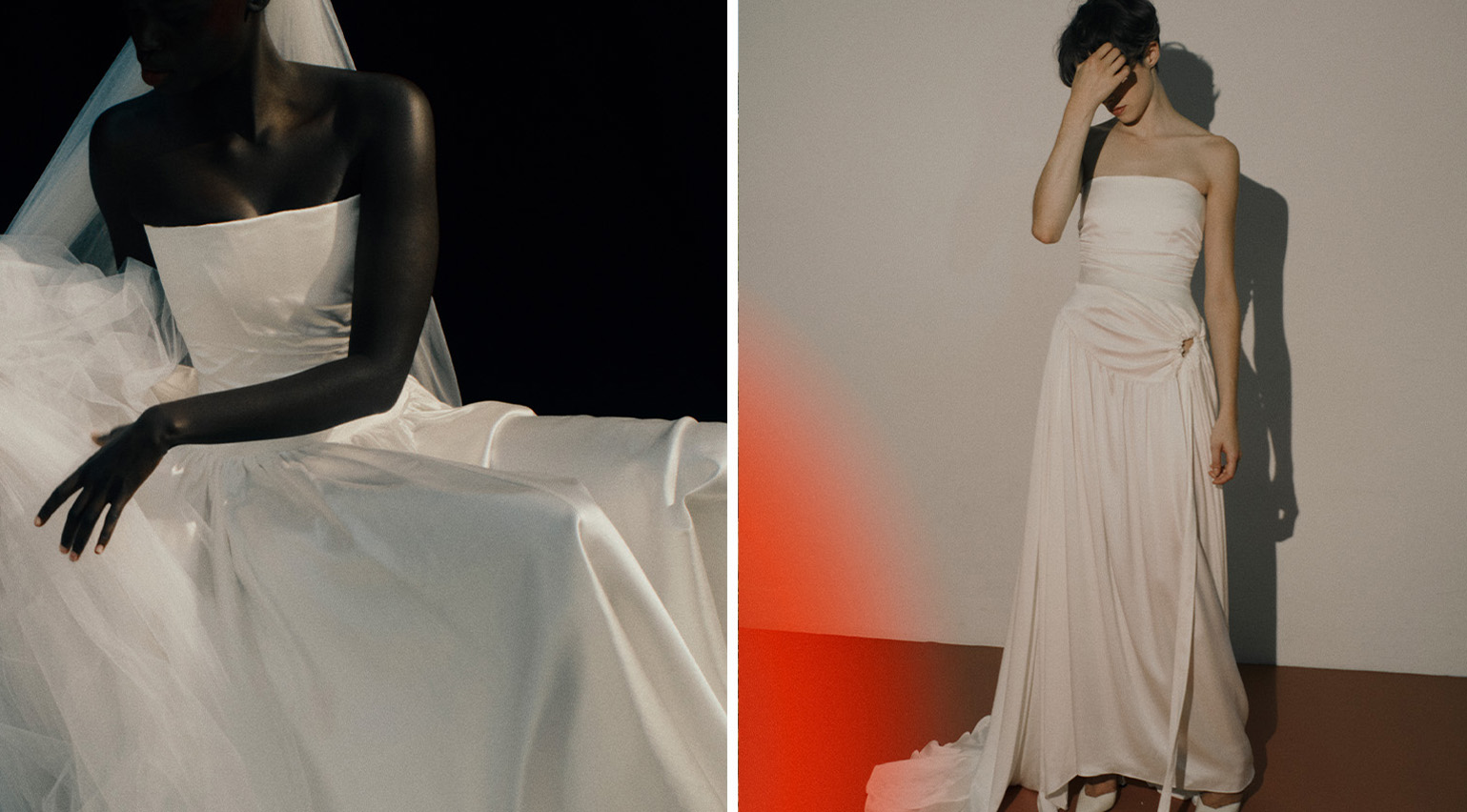 London label Wed Studio is embracing ‘oddness’ when it comes to bridal dressing
London label Wed Studio is embracing ‘oddness’ when it comes to bridal dressingThe in-the-know choice for fashion-discerning brides, Wed Studio’s latest collection explores the idea that garments can hold emotions – a reflection of designers Amy Trinh and Evan Phillips’ increasingly experimental approach
-
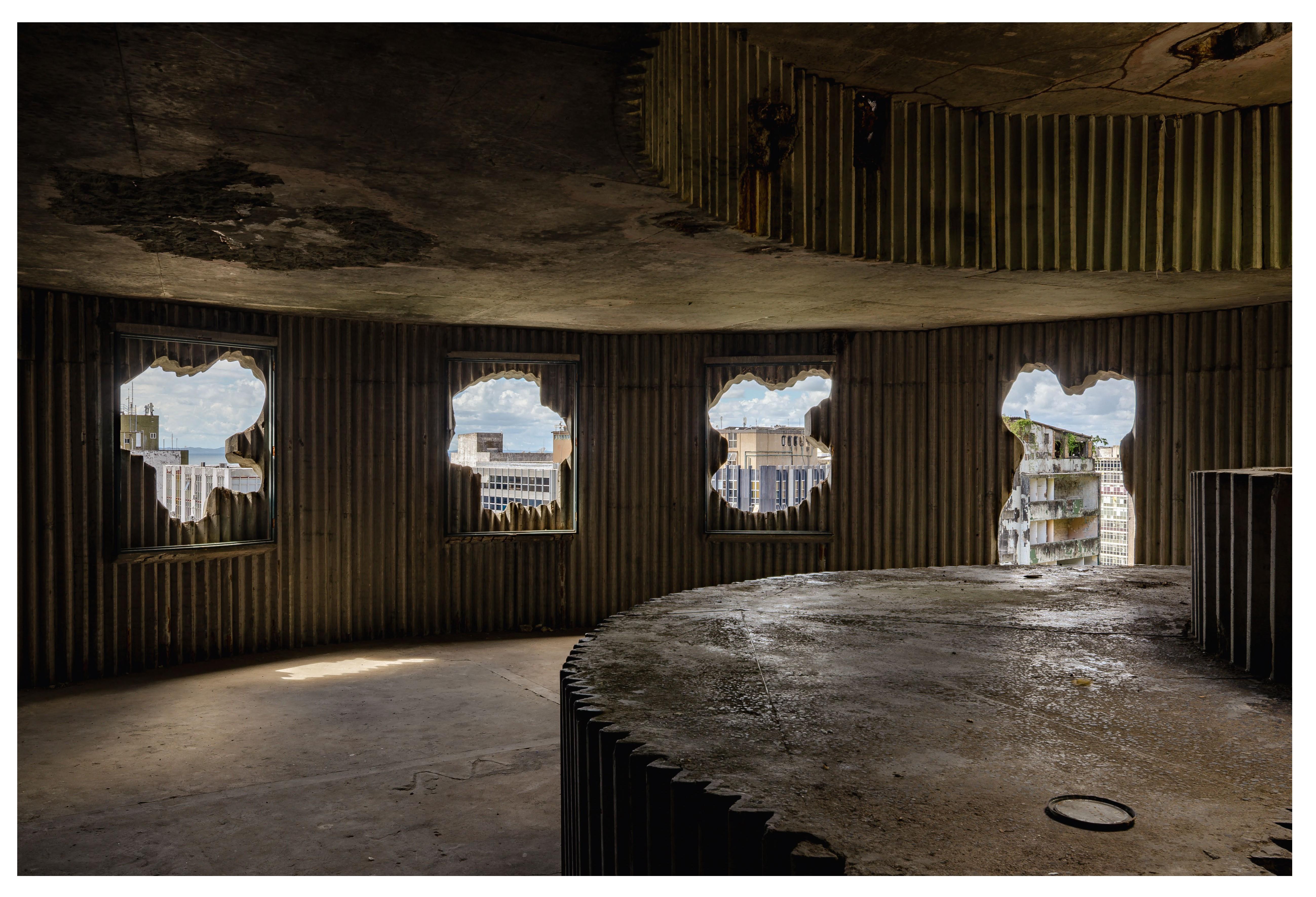 Arts institution Pivô breathes new life into neglected Lina Bo Bardi building in Bahia
Arts institution Pivô breathes new life into neglected Lina Bo Bardi building in BahiaNon-profit cultural institution Pivô is reactivating a Lina Bo Bardi landmark in Salvador da Bahia in a bid to foster artistic dialogue and community engagement
-
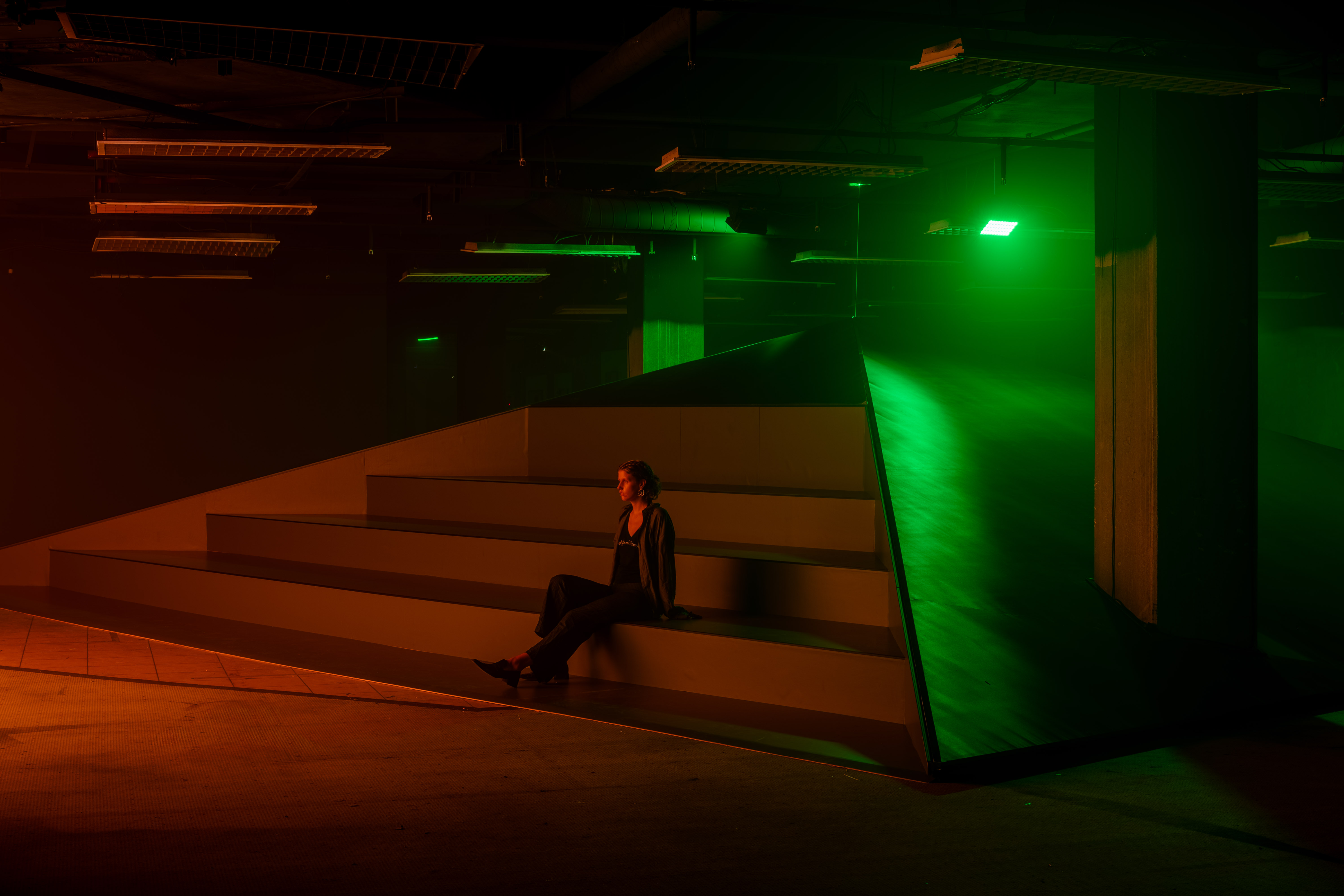 'There is no way light and darkness are not in exchange with each other': step inside Christelle Oyiri’s sonic world in Berlin
'There is no way light and darkness are not in exchange with each other': step inside Christelle Oyiri’s sonic world in BerlinIn an explosion of light and sound, Christelle Oyiri explores celebrity, mythology and religion inside CANK, a former brutalist shopping centre in Berlin’s Neukölln
-
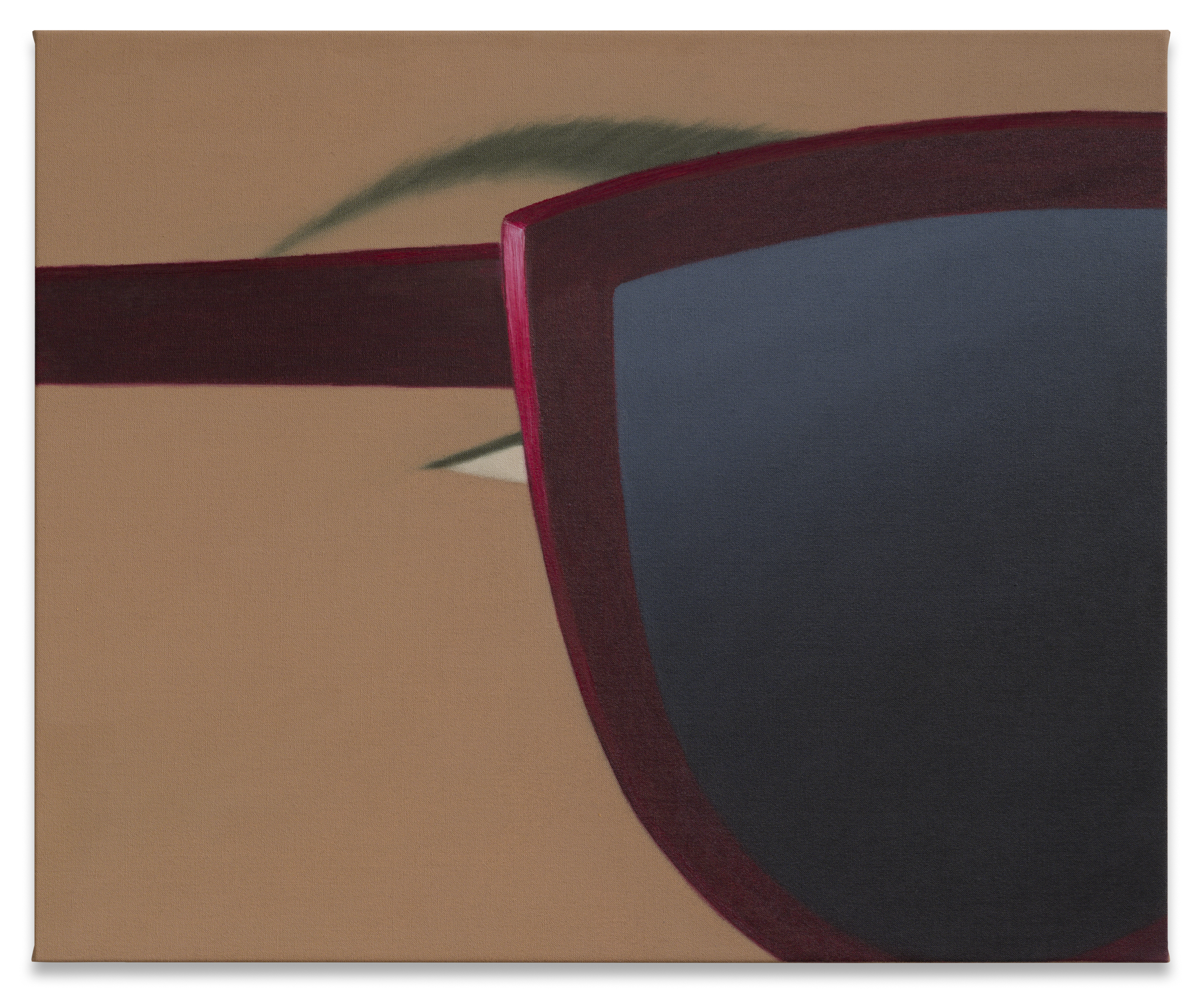 What's the story with Henni Alftan’s enigmatic, mysterious paintings? The artist isn’t saying
What's the story with Henni Alftan’s enigmatic, mysterious paintings? The artist isn’t sayingParis-based artist Henni Alftan's familiar yet uncanny works are gloriously restrained. On the eve of a Sprüth Magers exhibition in Berlin, she tells us why
-
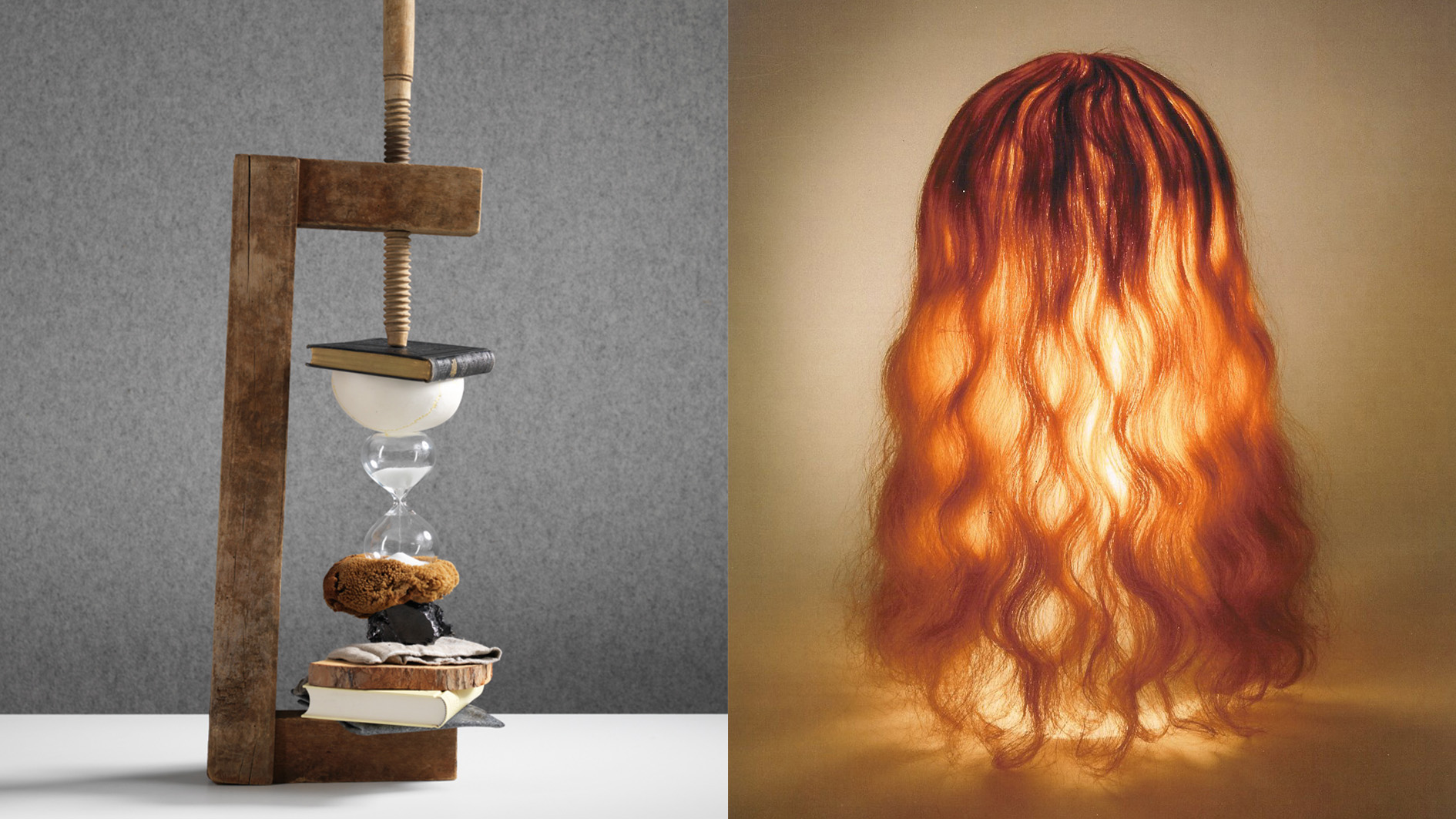 Rolf Sachs’ largest exhibition to date, ‘Be-rühren’, is a playful study of touch
Rolf Sachs’ largest exhibition to date, ‘Be-rühren’, is a playful study of touchA collection of over 150 of Rolf Sachs’ works speaks to his preoccupation with transforming everyday objects to create art that is sensory – both emotionally and physically
-
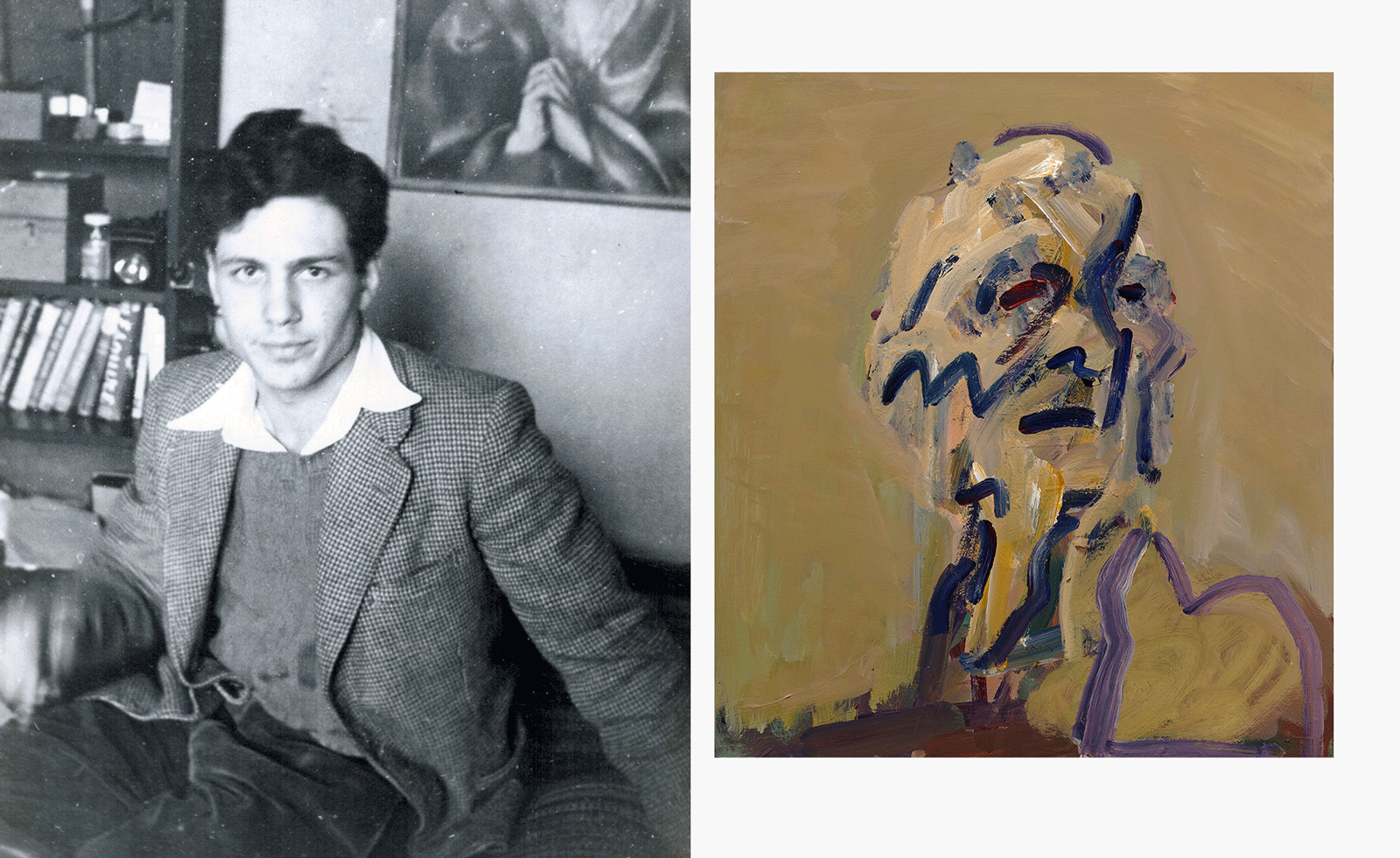 A posthumous exhibition in Frank Auerbach's home city of Berlin celebrates the work of the figurative painter
A posthumous exhibition in Frank Auerbach's home city of Berlin celebrates the work of the figurative painter‘Frank Auerbach’, on until 28 June at Galerie Michael Werner, Berlin, marks the first time the artist's work is shown in the city where he was born
-
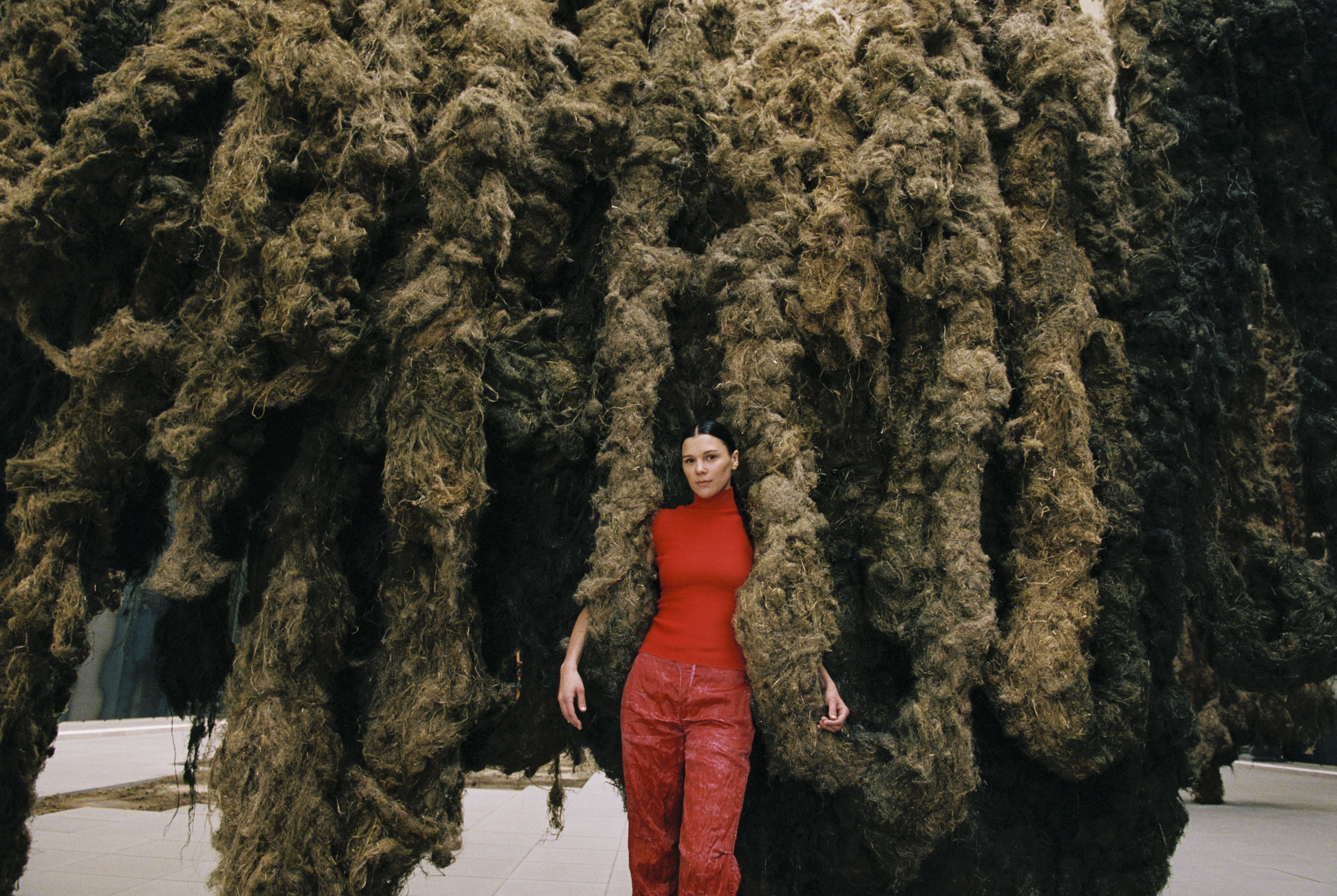 Klára Hosnedlová transforms the Hamburger Bahnhof museum in Berlin into a bizarre and sublime new world
Klára Hosnedlová transforms the Hamburger Bahnhof museum in Berlin into a bizarre and sublime new worldThe artist's installation, 'embrace', is the first Chanel commission at Hamburger Bahnhof
-
 Thrilling, demanding, grotesque and theatrical: what to see at Berlin Gallery Weekend
Thrilling, demanding, grotesque and theatrical: what to see at Berlin Gallery WeekendBerlin Gallery Weekend is back for 2025, and with over 50 galleries taking part, there's lots to see
-
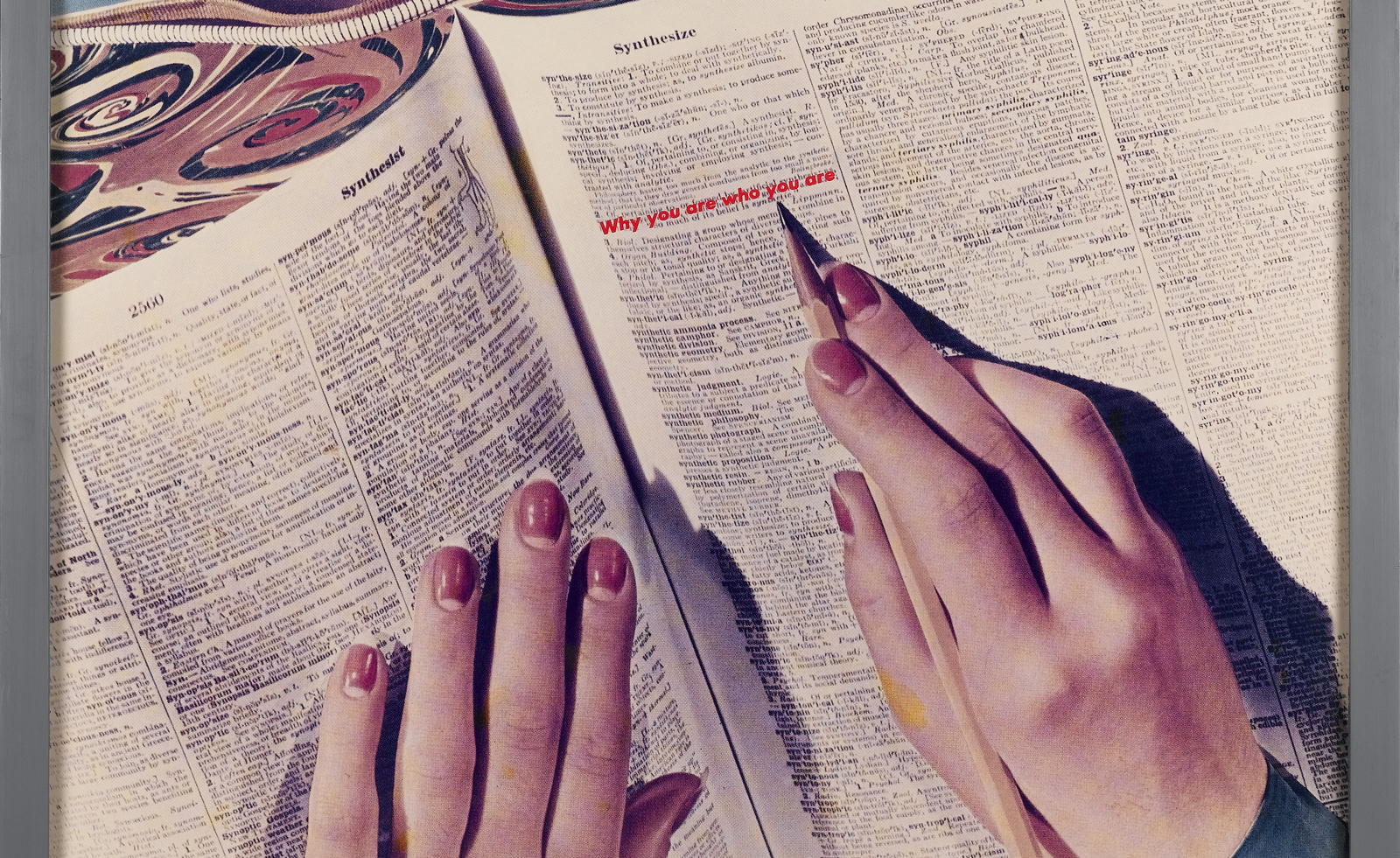 Take a rare chance to see the astonishing Ringier Collection of artworks in Düsseldorf
Take a rare chance to see the astonishing Ringier Collection of artworks in DüsseldorfFrom Barbara Kruger to Sylvie Fleury: publishing mogul Michael Ringier opens his private art collection to the public, sharing 500 works, and tells us what makes great art
-
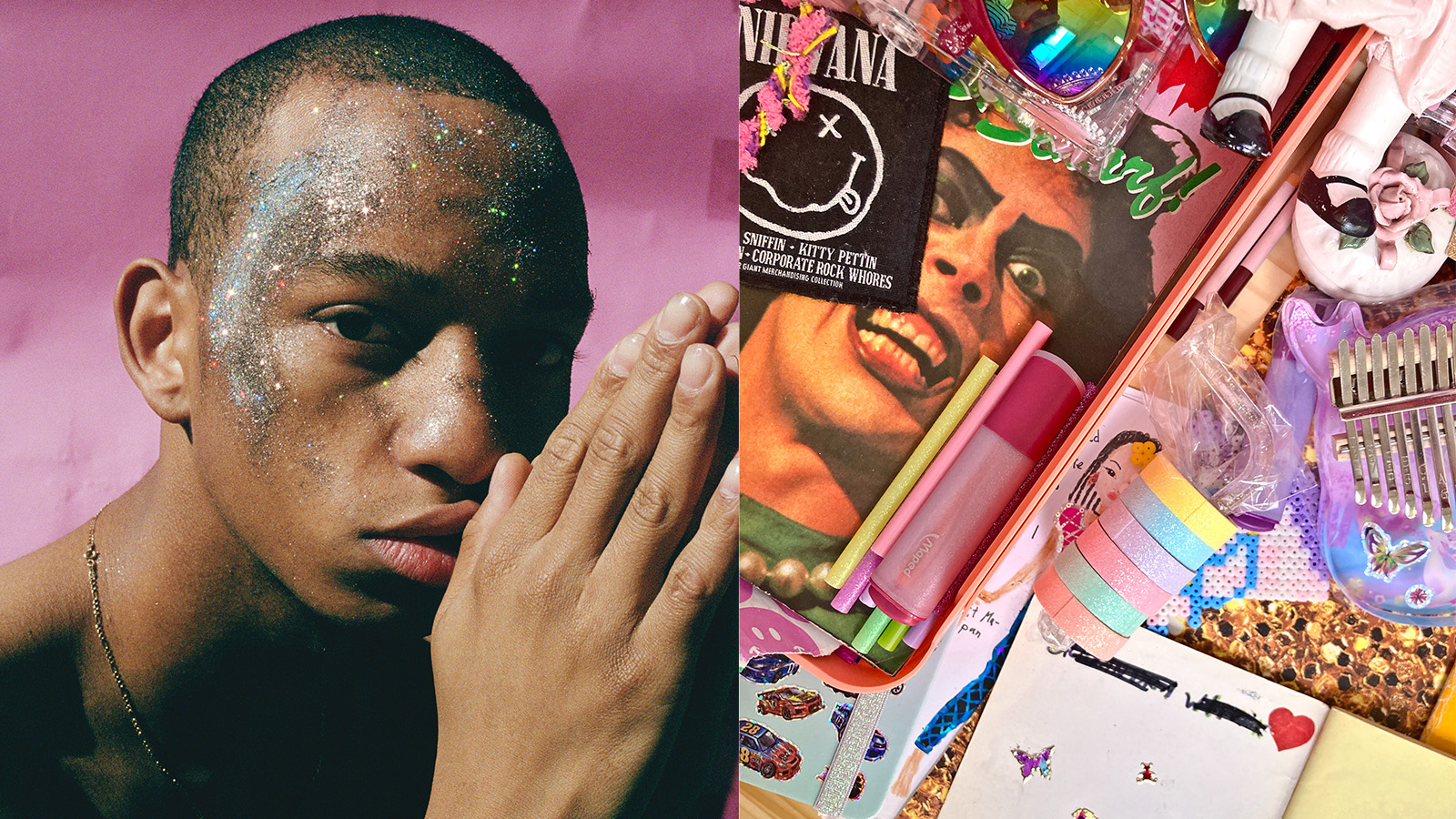 MK&G’s ‘Glitter’ exhibition: a brilliant world-first tribute to sparkle and spectacle
MK&G’s ‘Glitter’ exhibition: a brilliant world-first tribute to sparkle and spectacleMK&G’s latest exhibition is a vibrant flurry of sparkles and glitter with a rippling Y2K undercurrent, proving that 'Glitter is so much more than you think it is'